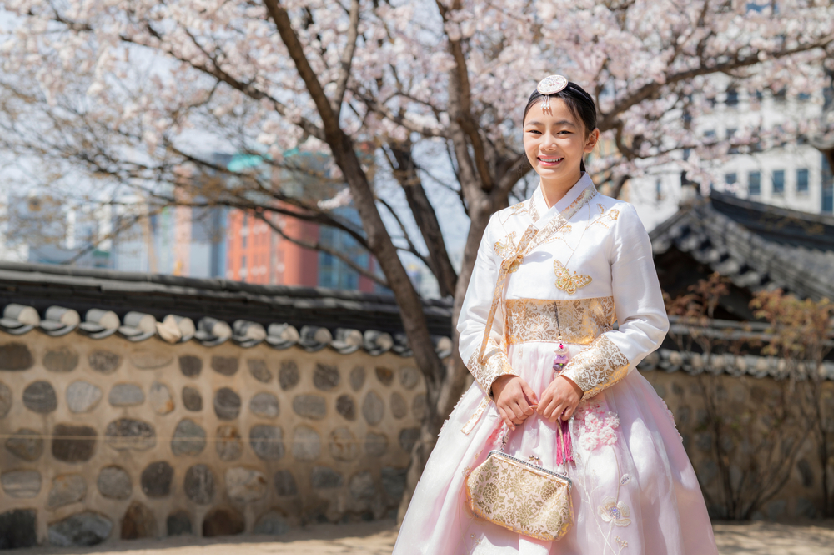Korean culture is rich and vibrant, with traditions that have been preserved for centuries. One of the most iconic elements of this culture is the Korean Traditional Costume, known as the Hanbok. The Korean hanbok dress is more than just attire; it is a symbol of Korea’s history, values and aesthetic principles. This blog will explore the cultural significance of the Hanbok, its history, its components and how it continues to influence fashion today.
The Historical Roots of the Hanbok

The Korean Traditional Costume or Hanbok, has a history that dates back over 1,600 years. Originally worn during the Three Kingdoms period (57 BC–668 AD), the Hanbok evolved through the Goryeo and Joseon dynasties. Each era left its mark on the design and structure of the Hanbok, resulting in a garment that reflects the cultural and social values of the time.
During the Joseon Dynasty (1392–1897), the Hanbok became more standardised, with distinct differences between clothing for the nobility and commoners. The colours, patterns and materials of the Hanbok were used to signify the wearer’s social status, marital status and even age. This period also saw the introduction of the distinct bell-shaped silhouette of the Hanbok, which remains a defining characteristic of the Korean hanbok dress today.
Components of the Hanbok
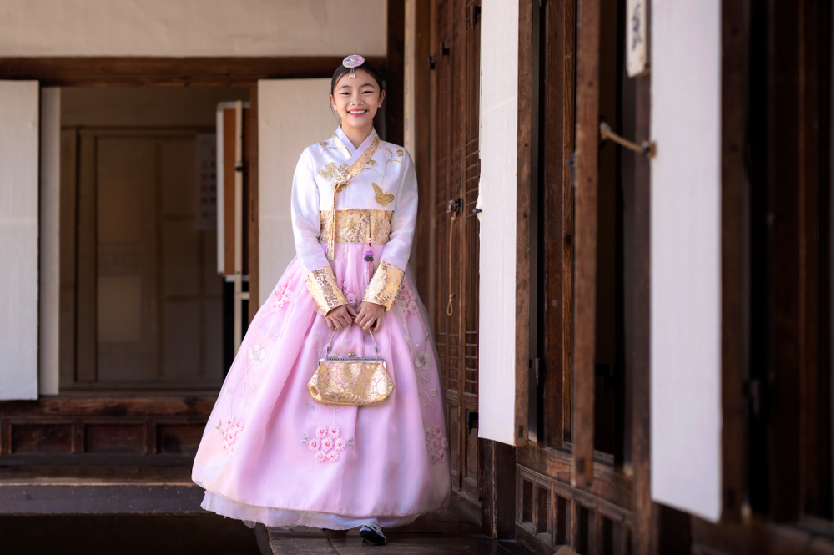
The Hanbok is a two-piece outfit consisting of the Jeogori (jacket) and the Chima (skirt) for women and the Jeogori and Baji (pants) for men.
Jeogori: The Traditional Jacket
The Jeogori is a short jacket with long sleeves that fasten at the front. It is usually secured with a ribbon called the Gorae, which adds a touch of elegance to the Korean traditional dress. The Jeogori has evolved, with the sleeves and length varying according to fashion trends of different eras.
Chima: The Flowing Skirt
The Chima is a full, flowing skirt that is worn high on the waist, creating the signature bell-shaped silhouette of the Korean hanbok dress. The Chima is often made from luxurious fabrics like silk and it can be adorned with intricate embroidery or patterns. The skirt’s volume and length are key to achieving the graceful and elegant look associated with traditional Korean national costume.
Baji: The Comfortable Pants
For men, the Baji is the counterpart to the Chima. These wide-legged pants are designed for comfort and ease of movement. The Baji is tied at the waist and often paired with an overcoat called the Durumagi during colder seasons.
Symbolism in Hanbok Design
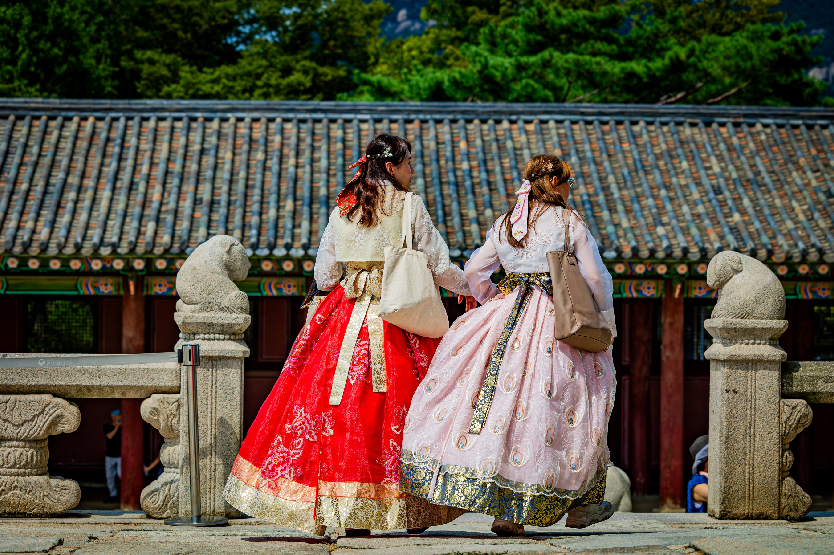
The design of the Hanbok is deeply symbolic, with every element carrying cultural significance. The colours of the Hanbok, for example, are not chosen randomly. Traditionally, bright colours were reserved for the upper class and special occasions, while more subdued tones were worn by commoners. Red symbolised passion and joy, yellow represented the centre of the universe, blue stood for hope and protection and white was a symbol of purity and modesty.
The patterns embroidered on the Hanbok also hold meaning. Dragons, phoenixes and flowers were common motifs, each symbolising different virtues such as courage, prosperity and longevity. These designs reflect the wearer’s aspirations and the values they wish to embody.
The Hanbok in Modern Fashion
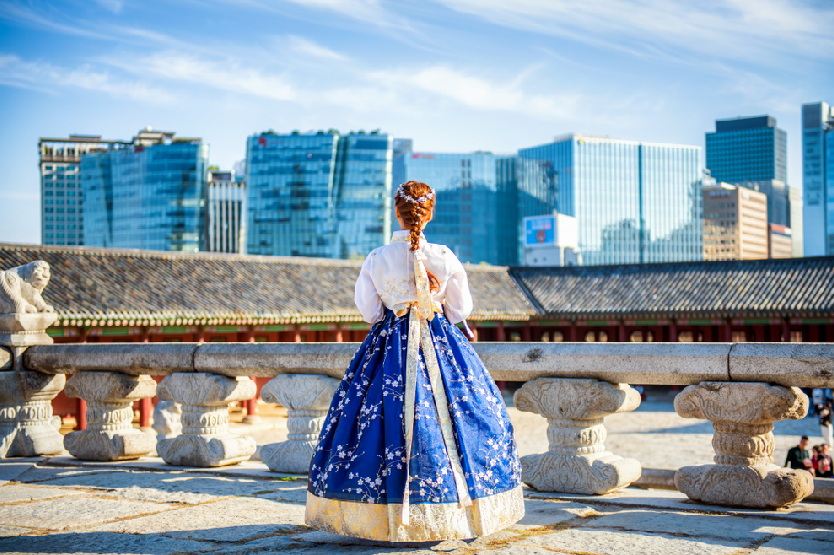
While the Hanbok is rooted in tradition, it has also found its place in contemporary fashion. Today, many designers are reinterpreting the Hanbok, blending its traditional elements with modern trends to create something new and exciting. This fusion of old and new has led to the rise of “fusion Hanbok,” a style that retains the essence of the Korean traditional dress while making it more accessible and wearable in everyday life.
The Korean Traditional Costume has also gained international attention, thanks to the global popularity of K-pop and Korean dramas. Celebrities and influencers often wear Hanbok-inspired outfits, introducing this beautiful attire to audiences worldwide. Fashion shows and cultural events in major cities like Paris, New York and London have showcased the Hanbok, highlighting its elegance and timeless appeal.
How to Wear the Hanbok: A Guide
Wearing a Hanbok requires an understanding of its components and the proper way to assemble them. Here’s a simple guide:
- Start with the Sokchima or Sokbaji: These are the inner garments, similar to a petticoat or underpants, that provide structure and volume to the outer garments.
- Put on the Chima or Baji: For women, the Chima should be tied securely around the waist, ensuring it sits high to create the desired silhouette. For men, the Baji should be tied at the waist, allowing for comfortable movement.
- Wear the Jeogori: The Jeogori should be fastened at the front, with the Gorae ribbon tied in a neat bow.
- Accessorise Appropriately: Traditional accessories like Norigae (ornamental pendants) or Jokduri (traditional coronet) can enhance the look, adding a touch of authenticity to your Korean national costume.
Hanbok: A Timeless Representation of Korean Culture
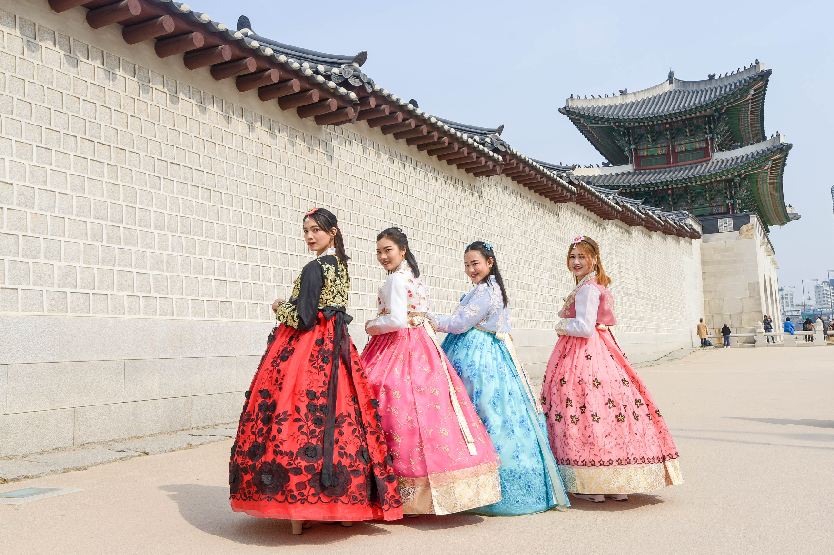
The Korean traditional dress is more than just a piece of clothing; it is a living representation of Korean culture and history. Its graceful lines, vibrant colours and intricate designs tell the story of a nation that values tradition, elegance and beauty. Today, the Hanbok continues to inspire both Koreans and the global fashion community, proving that its appeal is truly timeless.
At LaFetch, we celebrate the beauty of cultural attire like the Hanbok and its influence on modern fashion. Whether you’re drawn to traditional styles or modern interpretations, the Korean Traditional Costume offers something for everyone. Explore how the Hanbok can inspire your wardrobe, blending tradition with contemporary style.
Also Read:-
Elevate Your Wardrobe With The Latest Trends In Men’s Street Fashion
Mix and Match- How to Rock Kurtis for Jeans Look
More Useful Links:-
Men’s Street Fashion | Men’s Street Style Outfits | Indian Fashion Brands
